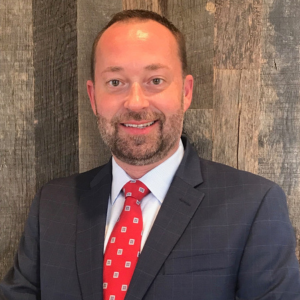How Community Outreach Drives Meaningful Impact for Senior Care Communities
When it comes to marketing and reputation management, senior care communities often focus on social media engagement and responding to reviews. However, outreach to the broader community is an equally powerful – and frequently overlooked – marketing strategy. To help you get started, three industry experts share their insights on how to build effective community outreach programs and explain the meaningful benefits these extra efforts can bring.
The Value of Community Outreach

Len Weiser, CEO and founder of InclusAge Partners
Effective community outreach not only enhances a senior care community’s reputation, but also fosters meaningful connections that support its mission. “When an organization is present and engaged in the community, it demonstrates commitment beyond its walls, building awareness of its services and values,” explains Len Weiser, CEO and founder of InclusAge Partners. “This visibility fosters trust and goodwill. Neighbors, local organizations, and families come to see the facility as a partner rather than just a provider.”
Building trust offers a wide range of benefits. It can inspire community members to recommend the senior care facility to others, support staff recruitment efforts, and create a dependable network the organization can rely on during challenging times. “When challenges arise, a facility with deep community roots often finds the community rallying behind it,” says Weiser. “In short, community involvement creates a cycle of mutual support, where the facility enriches the community, and the community, in turn, strengthens the facility.”
Strong community connections become especially important during times of need. As federal healthcare reimbursements decline, local communities are expected to play a greater role in bridging the resulting gaps in support. “Concerned citizens and local government – through philanthropy, volunteerism, resource allocation – will be a necessary part of ensuring senior care will be available in the community,” says Kelly Arduino, partner and healthcare industry leader at Wipfli.
Types of Effective Outreach Strategies
Being visible in places where the broader community naturally gathers – such as fairs, clean-up events, and business organizations – can be highly effective. Community engagement also grows when connections are made in settings that matter to staff and older adults, including schools, community centers, and places of worship. “These efforts demonstrate shared values and commitment,” says Weiser.
It’s equally important to welcome the greater community into the facility through educational programs and events. These opportunities help community members feel comfortable with the organization. In turn, when a need arises, those community members are more likely to reach out to the organization because of that existing relationship. “Over time, these strategies build trust, encourage referrals, support hiring, and reinforce the organization’s role as a valued community partner,” Weiser explains.

Michele Berardi, senior director of communications and public relations at Kendal-Crosslands Communities
Michele Berardi, senior director of communications and public relations at Kendal-Crosslands Communities, notes that community outreach has long been an integral part of their mission – with some efforts tracing back more than 50 years. The organization employs a wide range of initiatives, from cleaning homes for financially struggling local seniors to preparing meals for the Meals on Wheels program and promoting a restraint-free nursing home environment.
Residents have also played an active role in community development, helping to establish a new school in one of the area’s most underserved neighborhoods and launching After the Bell, an after-school program founded by community members.
In addition, Kendal-Crosslands Communities maintains a strong local presence through participation in the Chamber of Commerce, sponsorship and attendance at nonprofit fundraisers, and hands-on service such as helping to build two Habitat for Humanity homes. The community has also been deeply involved in organizing and supporting local Martin Luther King Jr. Day celebrations, further reflecting its long-standing commitment to service and inclusion.
How Community Outreach Helps
Community outreach provides a space for shared interaction and understanding, strengthening the connections between an organization and the greater community. The facility, in turn, becomes a valued source of community pride and appreciation. “In the event that financial support – either through property tax support or philanthropy – is needed, there is less convincing needed as to why, what, and how the facility contributes to community wellbeing,” she says.
By staying active in the greater community, a facility demonstrates that it’s invested in more than just its own operations. “Active involvement builds visibility, trust, and goodwill, which in turn encourage positive word-of-mouth, future referrals, and support during times of need,” Weiser explains. “Over time, this consistent presence reinforces the facility’s credibility and positions it as a trusted resource for older adults and their families.”
For Berardi, community involvement has allowed her organization to practice its values and reinforce its purpose. “When you have purpose, you have meaning in your life,” she says. “It’s not only good for residents but staff too.”

Kelly Arduino, partner and healthcare industry leader at Wipfli
Strategies to Get Started with Community Outreach
For senior care facilities looking to get started with or expand their community outreach, some simple steps can help guide the process. Arduino recommends that facilities begin by taking inventory of the relationships that residents have or had. “From there, identify those that have mutual goals around community health and wellbeing or social service to improve quality of life, and prioritize strategic planning,” she says. Residents may be able to help facilitate introductions, if needed.
Weiser approaches the process by attending local events, introducing himself, and making sure attendees know about the facility he represents. “Sponsoring events, when possible, shows commitment, and I also invite partners to tour the facility or join me for lunch, which helps build familiarity,” he says. Weiser also meets with local officials to establish credibility and begin building relationships. “Over time, these small but consistent efforts demonstrate that we want to be a true partner in the community, not just a service provider, which builds trust and goodwill.”
Building strong connections through community outreach is a key component of long-term success for senior care facilities. “It is incumbent on the leaders of healthcare organizations to work to encourage local support and understanding,” says Arduino. “Building a community culture of respect, dedication, and, potentially, financial support will take time – so start now.”

Paige Cerulli is a contributing writer to i Advance Senior Care.
Related Articles
Topics: Activities , Business Marketing Including Social Media and CRM , Communication , Featured Articles , Operations












